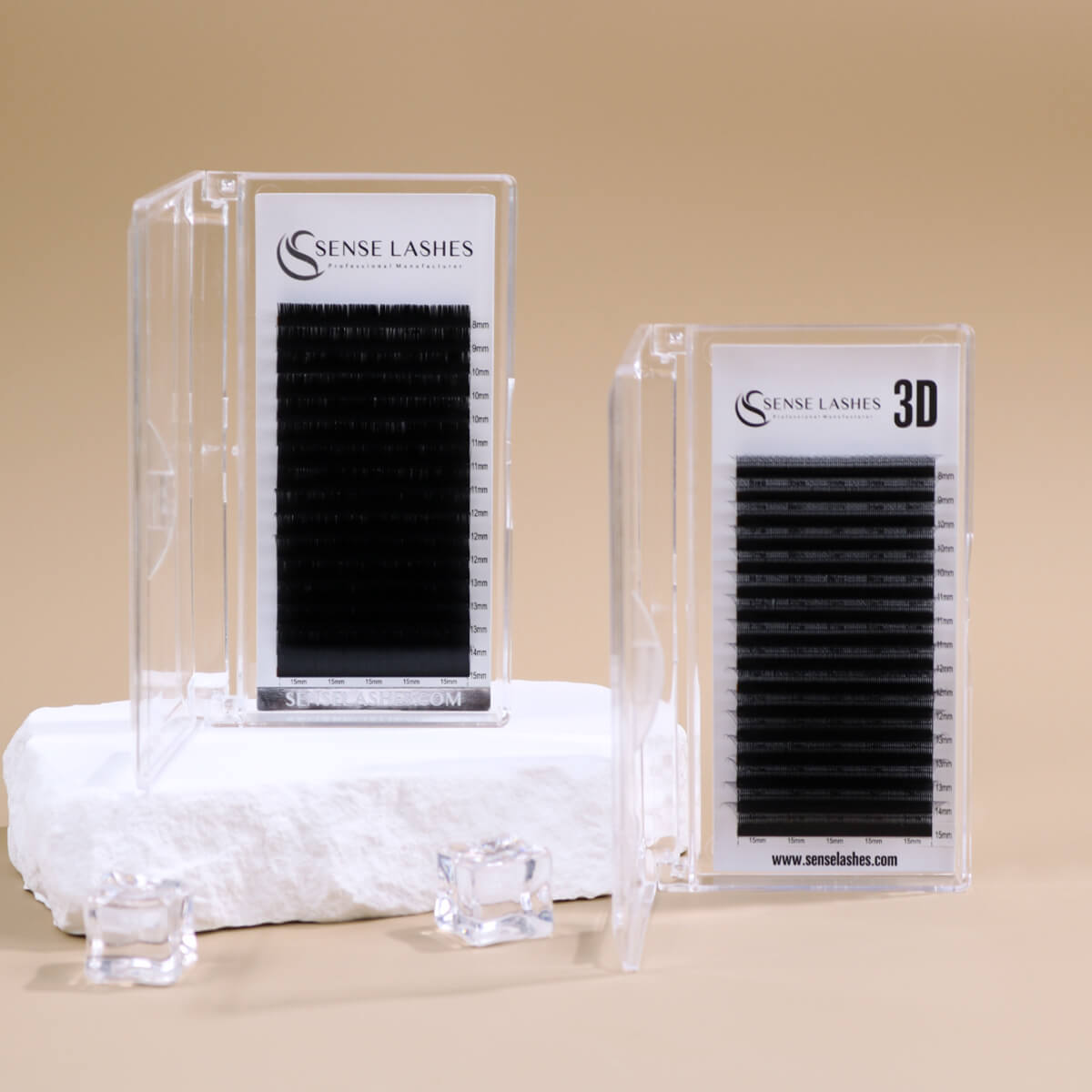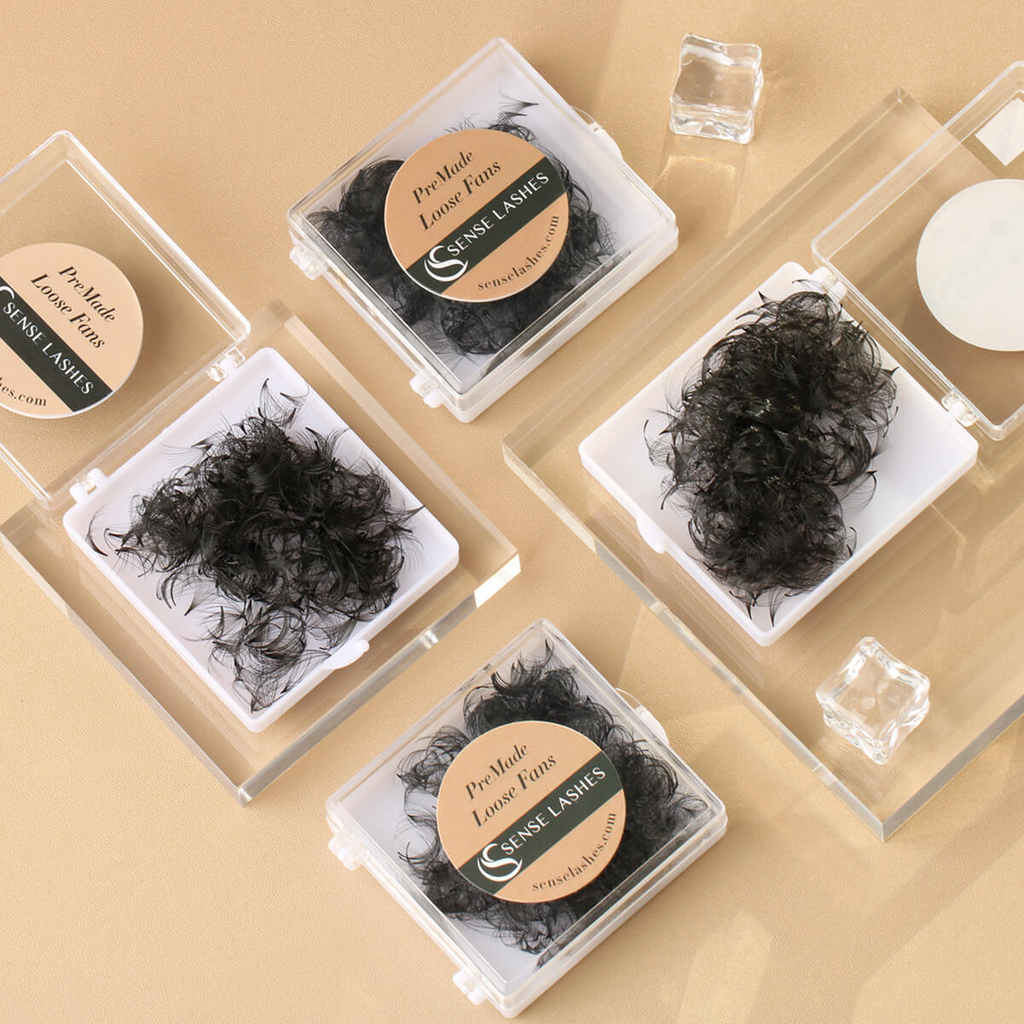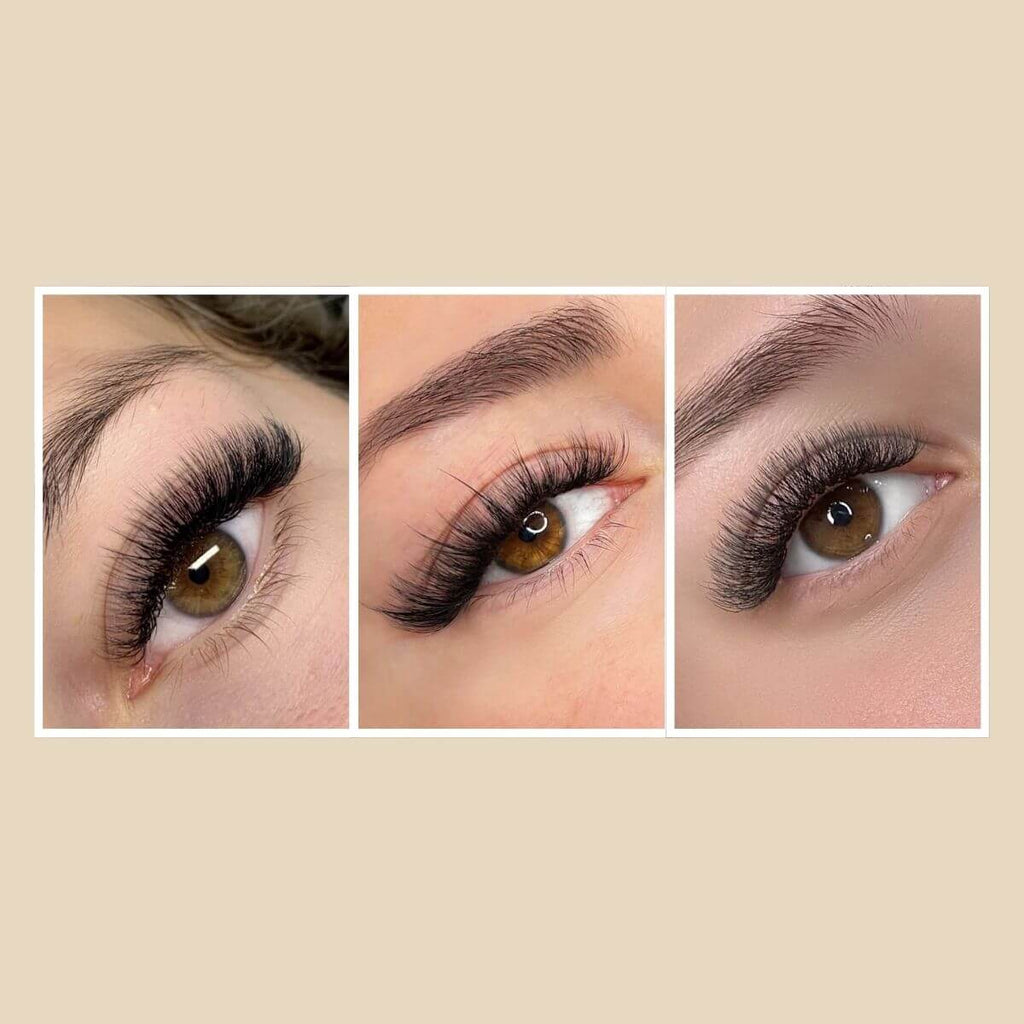Lash Extension Mapping Guide: Perfect Styles for Every Eye Shape
Using the same lash map on everyone? You're missing out on creating those jaw-dropping results that keep clients coming back. The secret isn't just perfect technique - it's matching your mapping to each client's eye shape, and most artists never learn this. Once you start customizing for small eyes, downturned eyes, hooded lids, and more, your work will go from good to absolutely stunning. Here's the simple breakdown for reading eye shapes and choosing maps that actually work.
Why Eye Shape Actually Matters
We've all been there - you've done everything right, perfect isolation, flawless application, but somehow the final result just looks... fine. Not bad, but not that show-stopping look that has people stopping your client on the street either. The difference between "nice lashes" and "OMG where did you get these done?" usually comes down to one thing: whether you matched your mapping to their eye shape.
Consider this: the same dress does not look good on every figure, and the same lash map will not be a complement to every eye shape. A cat eye map that flatters almond eyes may make round eyes bulgy, and a doll eye map that opens up tiny eyes to perfection may make wide-set eyes appear even more apart.
And then, when you get the perfect mapping for that person's individual eye shape, magic happens. Their eyes appear bigger, more lifted, more in harmony with the rest of their face. Now they're receiving compliments from strangers, and friends are requesting that you email them your info. You've officially graduated from being a good lash artist to being the lash artist everybody wants to book.

Reading Your Client's Eyes in 30 Seconds
You don't need a lengthy consultation to figure out your client's eye shape - with practice, you can assess their eyes quickly and accurately. Here's how to read their features fast so you can choose the perfect mapping strategy.
- The Quick Assessment Trick: Look at their eyes while they're sitting upright with a relaxed expression. Notice the overall shape first - are they more round, almond, or narrow? Then check the outer corners - do they turn up, down, or sit level? Finally, see how much lid space is visible when they're looking straight ahead.
- Sitting Up vs. Lying Down: Always do your initial assessment while they're sitting up because gravity changes everything when they lie down. Hooded eyes might look less hooded, and the natural eye shape can shift. What you see sitting up is what everyone else will see in real life.
- Red Flags to Watch For: If their natural lashes are super straight and point downward, avoid strong curls that might poke their lid. If their eyes are very close together, skip the doll eye map. If they have practically no lid space visible, keep lengths conservative to prevent discomfort.
- Trust Your Expertise: When a client asks for something that won't flatter their eye shape, gently explain why your suggestion will look better. Most clients want to look amazing more than they want a specific style - show them examples and they'll usually trust your professional judgment.
The Complete Eye Shape Playbook
Every eye shape has its own set of rules, and once you know them, you'll never struggle with lackluster results again. Here's your complete breakdown for the six most common eye shapes you'll encounter, with specific techniques that actually work.
Small Eyes: Making Them Pop
Small eyes need all the help they can get to appear larger and more prominent. The key is creating maximum impact without overwhelming the delicate features.
Doll eye mapping is absolutely perfect for small eyes because it focuses the longest lashes right in the center, creating an instant wide-eyed, doll-like effect. This technique draws attention to the pupil and makes the entire eye appear significantly larger. The gradual length increase toward the center creates a beautiful rounded shape that mimics naturally large eyes.
Your Small Eyes Strategy:
1. Use doll eye mapping with the longest lashes at the center
2. Stick to 10-13mm lengths - anything longer looks disproportionate
3. Choose D curl for maximum lift and curl retention
4. Apply medium density volume to create fullness without weight
5. Focus placement slightly above the natural lash line for extra lift
6. Avoid extending too far past the natural lash line
Downturned Eyes: The Lift Game
Downturned eyes require strategic placement to counteract the natural droop and create a lifted, more youthful appearance.
The secret is identifying exactly where the eye starts to turn downward - usually about two-thirds across the eye. Everything before that point should follow normal mapping rules, but once you hit the droop zone, your strategy needs to change completely. This is where many artists go wrong by continuing the same pattern all the way to the outer corner.
Your Downturned Eyes Strategy:
1. Map the exact point where the downward turn begins
2. Use B or C curls from inner to mid-eye for natural lift
3. Switch to C or D curls only at the droopy section
4. Gradually increase length toward the droop point, then decrease
5. Stop lash placement before the very outer corner
6. Blend curl transitions smoothly to avoid harsh lines
7. Never extend lashes past the natural outer corner
Wide Set Eyes: Bringing Them Closer
Wide-set eyes need techniques that draw attention inward and create the illusion of closer-set features.
Cat eye mapping is the worst thing you can do for wide-set eyes because it emphasizes the outer corners and makes them appear even further apart. Instead, you want to create vertical emphasis that draws the eye inward. Both doll eye and reverse cat eye mappings work beautifully here, depending on the client's other features and preferences.

Your Wide Set Eyes Strategy:
1. Never use cat eye mapping - it makes spacing worse
2. Choose doll eye mapping for maximum center emphasis
3. Try reverse cat eye for subtle inward pull
4. Use slightly longer lengths throughout for vertical emphasis
5. Keep outer corner lengths conservative
6. Focus volume and curl toward the inner two-thirds of the eye
7. Place lashes slightly closer to the inner corner than usual
Close Set Eyes: Creating Space
Close-set eyes are helped by methods that define the width and direct the focus outwards to counteract facial symmetry.
Cat eye mapping is your standard method here, but it must be applied with consideration. The aim is to define a horizontal length that distances the eyes without appearing blatantly unnatural. Softer curls on the outer side prevent the extreme look from becoming too overwhelming for everyday use.
Your Close Set Eyes Strategy:
1. Use cat eye or kitten eye mapping for outside stress
2. Apply softer B or C curls on the outer third
3. Build gradually in length to the outer corner
4. Extend slightly longer than the natural lash line (but not too much so)
5. Keep inner corner lengths shorter to avoid crowding
6. Use medium to full volume for matching fullness
7. Angle outer lashes slightly up and outward
Deep Set/Hooded Eyes: The Comfort Challenge
Deep-set and hooded eyes come with special challenges since there isn't much lid room, and there is a danger of the lashes rubbing against the skin.
The greatest error with hooded eyes is employing too strong curls, which make the lash tips roll back and strike the eyelid. This causes discomfort and can damage both extensions and natural lashes. Such constant irritation from extensions poking the skin can mimic the discomfort associated with Trichiasis, a condition where natural lashes grow inward. Conservative curl selection and precise length selection are key to comfort and longevity.
Your Deep Set/Hooded Eyes Strategy:
1. Use B and C curls only - do not use D curls at all
2. Boast conservative lengths: Max 8-11mm
3. Test application of curl placement before full application
4. Use lighter volume so that product weight is not placed on hooded lids
5. Map carefully when eyes are open to check clearance
6. Apply lashes slightly lower on the natural lash for clearance
7. Always prioritize comfort over dramatic effect
Round/Protruding Eyes: The Elongation Effect
Round or protruding eyes are in need of horizontal elongation so as to create a more balanced, almond-shaped look.
Cat eye mapping is lovely here because it pulls the eye out and creates that desired feline shape. But softer curls are essential - too much curl on already prominent eyes makes them look bulgy or overpowering. The aim is sleek elongation, not dramatic intensity.
Your Round/Protruding Eyes Strategy:
1. Employ cat eye mapping for horizontal lengthening
2. Opt for B and C curls - skip strong D curls
3. Use the longest lengths on the outer third
4. Gradually build length from inner to outer corner
5. Use medium density in order not to overpower prominent features
6. Hold outer lashes horizontally rather than upwards
7. Lengthen slightly past the natural lash line for a stretched look
Real Talk: Client Consultations That Actually Work
The difference between a smooth appointment and a disaster often comes down to those first few minutes of consultation. Here's how to have conversations that actually prevent problems and set you both up for success.
The 5-Minute Consultation Framework
Start by asking them to look straight ahead while you assess their eye shape quickly. Then ask three key questions: "What look are you hoping to achieve?" "Is there anything about your current lashes that bothers you?" and "How much maintenance are you comfortable with?" These questions tell you everything you need to know about their expectations, problem areas, and lifestyle.
Reading Between the Lines
When clients say "I want something natural," they usually mean "I don't want to look overdone." When they say "dramatic," they often mean "I want people to notice but not look fake." Pay attention to their makeup style, how they're dressed, and their personality - this tells you more than their words sometimes. Ask follow-up questions like "Can you show me a photo of lashes you love?" to get clarity.
When to Give Them What They Want
If a client insists on a style that won't flatter their eye shape, but it's not going to cause damage or major problems, just do it. Sometimes they need to see it for themselves. You can always adjust at their next appointment when they say "I want something different this time."
The Magic Explanation
Instead of saying "That won't work," try this: "I love that you want to try something bold! Based on your eye shape, I can create that same energy with a slightly different approach that'll be even more flattering. Can I show you what I'm thinking?" This gets them excited about your expertise rather than defensive about their choice.
Documentation That Saves Time
Take a quick photo of their eyes (with permission) and note their eye shape, preferred curl, and any special requests in their file. Write down what worked and what didn't. This saves you from starting over every appointment and shows clients you're paying attention to their individual needs.
Mistakes That Kill Your Results
Even experienced artists fall into these common traps that can turn great technique into disappointing results. Here's how to spot and avoid the mistakes that make your work look amateur.
- The "Favorite Map" Trap: Most artists find one mapping style that works well and use it on everyone. Cat eye looks amazing on some clients, but it makes wide-set eyes look even wider and can overwhelm small features. Break out of this habit by consciously trying different maps - your clients will notice the difference immediately.
- Overcurling Disasters: Using D curl on every client is a recipe for problems. On hooded eyes, strong curls hit the eyelid and cause discomfort. On downturned eyes, too much curl at the outer corners can look unnatural. Match your curl choice to their eye shape and natural lash direction, not just their request for "maximum drama."
- Length Mistakes That Scream Amateur: Going too long too fast creates that obvious "fake lash" look. Jumping from 8mm to 14mm without proper gradation looks choppy and unnatural. Keep your length variations gradual - usually 1-2mm differences between sections work best for smooth transitions.
- Volume Distribution Fails: Placing the same volume everywhere flattens the entire look and wastes your time. Light volume on inner corners, medium through the center, and slightly heavier on outer corners creates natural dimension. Avoid over-volumizing hooded eyes or under-volumizing sparse natural lashes.
- Quick Damage Control: If you realize you've made a mapping mistake mid-application, don't panic. You can often fix it by adjusting the remaining sections or strategically placing a few different lengths to balance things out. Sometimes removing a few problematic lashes and replacing them saves the entire set.
Keep Getting Better at What You Do
You don't need expensive courses or fancy tools to improve your mapping skills - some of the best practice happens during your regular workday with simple techniques that fit into your existing routine.
- Practice Between Clients: Use those few minutes between appointments to study your next client's eye shape while they're filling out forms. Take mental notes during application about what's working and what isn't. When you're scrolling social media at home, actually look at people's eye shapes instead of just the lash work - you'll start recognizing patterns everywhere.
- Build Your Success Library: After each client, jot down a quick note about what mapping you used and how it turned out. Something like "doll eye + D curl = perfect for small eyes" or "cat eye too dramatic for her face." These little notes become gold when you see similar eye shapes later and can't remember what worked last time.
- Find Your Strengths: Pay attention to which clients always leave absolutely thrilled versus just satisfied. What did you do differently on those sets? Maybe you're naturally great with hooded eyes, or you have a gift for making small eyes look stunning. Lean into what you're already good at while staying open to trying new approaches.
- Stay Fresh Without Chasing Trends: Follow other artists for inspiration, but focus on perfecting techniques that will always look good. Solid mapping skills, smooth length transitions, and comfortable application never go out of style. New trends are fun to try, but your bread and butter should be techniques that make every client look and feel amazing.
Turn Good Lashes Into Great Ones
Once you start mapping for each client's specific eye shape, you'll wonder why you ever used the same approach on everyone. Your clients will leave absolutely obsessed with their lashes, and suddenly your books will be full of referrals from people asking where their friends got their amazing lashes done. These techniques aren't rocket science, but they're what separate good lash artists from the ones everyone wants to book with. Pick one eye shape from this guide and try the mapping strategy on your next client - you'll see the difference immediately.





Leave a comment